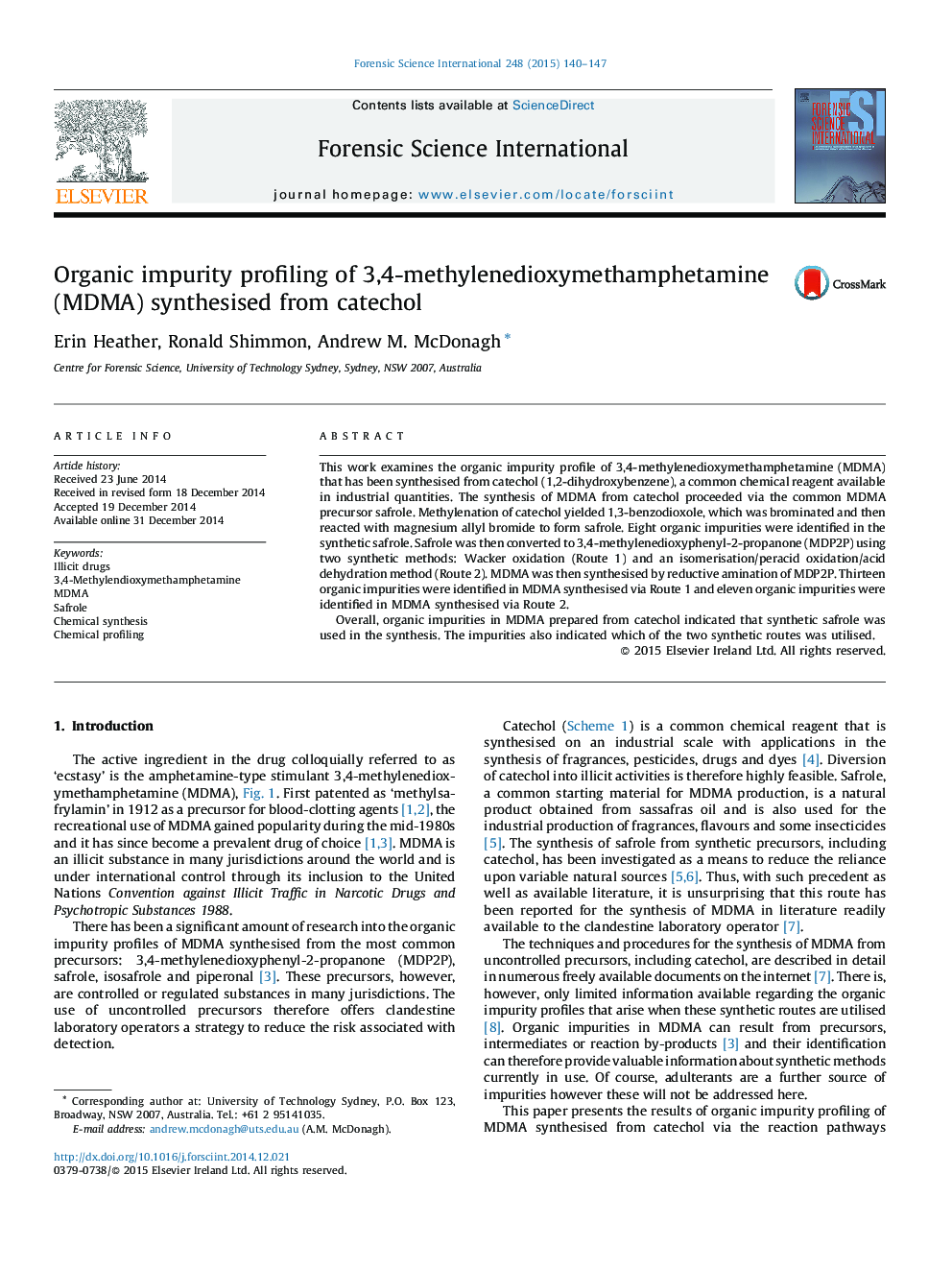| کد مقاله | کد نشریه | سال انتشار | مقاله انگلیسی | نسخه تمام متن |
|---|---|---|---|---|
| 95515 | 160433 | 2015 | 8 صفحه PDF | دانلود رایگان |

• Safrole and 3,4-methylenedioxymethamphetamine were synthesised from catechol.
• The organic impurity profile of MDMA synthesised from catechol has been examined.
• Organic impurities in MDMA made from catechol indicated synthetic safrole was used.
• The impurities indicated which synthetic routes were utilised.
This work examines the organic impurity profile of 3,4-methylenedioxymethamphetamine (MDMA) that has been synthesised from catechol (1,2-dihydroxybenzene), a common chemical reagent available in industrial quantities. The synthesis of MDMA from catechol proceeded via the common MDMA precursor safrole. Methylenation of catechol yielded 1,3-benzodioxole, which was brominated and then reacted with magnesium allyl bromide to form safrole. Eight organic impurities were identified in the synthetic safrole. Safrole was then converted to 3,4-methylenedioxyphenyl-2-propanone (MDP2P) using two synthetic methods: Wacker oxidation (Route 1) and an isomerisation/peracid oxidation/acid dehydration method (Route 2). MDMA was then synthesised by reductive amination of MDP2P. Thirteen organic impurities were identified in MDMA synthesised via Route 1 and eleven organic impurities were identified in MDMA synthesised via Route 2.Overall, organic impurities in MDMA prepared from catechol indicated that synthetic safrole was used in the synthesis. The impurities also indicated which of the two synthetic routes was utilised.
Journal: Forensic Science International - Volume 248, March 2015, Pages 140–147